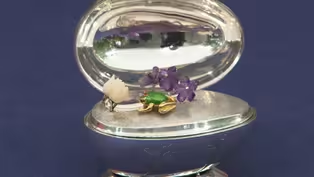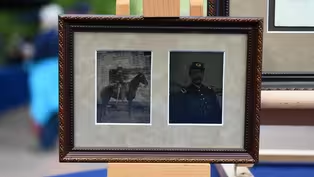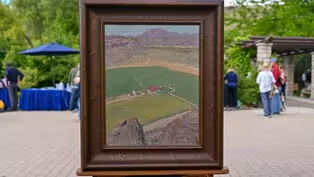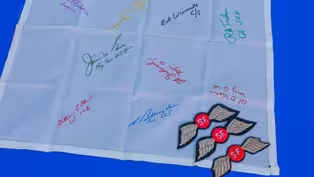
Appraisal: J. T. Dickman Shooting Gallery Target, ca. 1915
Clip: Special | 4m 27sVideo has Closed Captions
Appraisal: J. T. Dickman Clown Shooting Gallery Target, ca. 1915
In RECUT: Idaho Botanical Garden, Part 1, Allan Katz appraises a J. T. Dickman clown shooting gallery target, ca. 1915.
Problems playing video? | Closed Captioning Feedback
Problems playing video? | Closed Captioning Feedback
Funding for ANTIQUES ROADSHOW is provided by Ancestry and American Cruise Lines. Additional funding is provided by public television viewers.

Appraisal: J. T. Dickman Shooting Gallery Target, ca. 1915
Clip: Special | 4m 27sVideo has Closed Captions
In RECUT: Idaho Botanical Garden, Part 1, Allan Katz appraises a J. T. Dickman clown shooting gallery target, ca. 1915.
Problems playing video? | Closed Captioning Feedback
How to Watch Antiques Roadshow
Antiques Roadshow is available to stream on pbs.org and the free PBS App, available on iPhone, Apple TV, Android TV, Android smartphones, Amazon Fire TV, Amazon Fire Tablet, Roku, Samsung Smart TV, and Vizio.
Buy Now
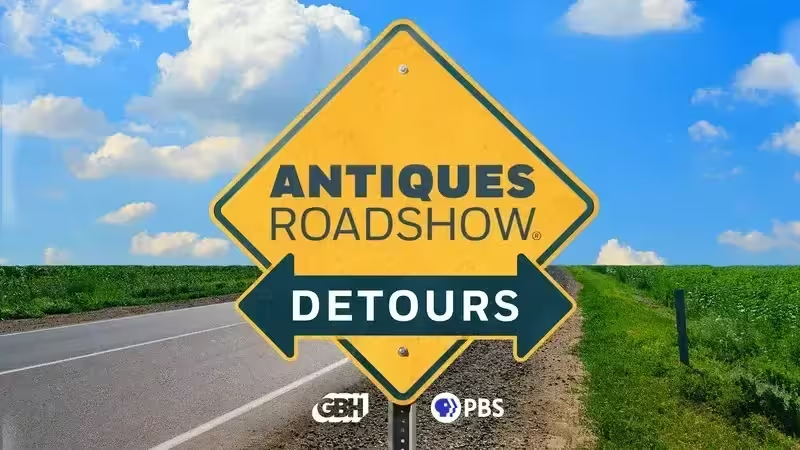
ANTIQUES ROADSHOW DETOURS
Ever wondered what happens to the treasures featured on America’s beloved ANTIQUES ROADSHOW after the cameras leave town? Host Adam Monahan tracks down the juicy afterlives of your favorite finds from PBS’s hit series.Providing Support for PBS.org
Learn Moreabout PBS online sponsorshipGUEST: I think it was probably about ten years ago when I went to a garage sale.
And, uh, while my husband was going through the barn, pulling out things that he was interested in, and asking how much, and the young man said, "Well, just make a pile."
This fella was just propped up on the porch kind of up against a stair.
And because of my age, I know that he's a shooting gallery target.
So I said, "Well, would this be for sale?"
He said, "Yeah, just add it to the pile."
We said, uh, "Okay, what do we owe you?"
He said, "How about $100?"
APPRAISER: (chuckles) GUEST: And I don't know what all was in there, in that pile that my husband found.
APPRAISER: (laughs) You see that it's dated 1911.
And you see the name on it in Los Angeles, California.
So Dickman was born in Wisconsin in 1876.
GUEST: Okay.
APPRAISER: And then as a young man, he finds himself in Los Angeles, and comes upon these shooting gallery, they called them rigs.
I used to go to Coney Island as a kid, and actually played with one of these things.
And a rig was cast iron.
Some of them were mobile, and they moved around...
GUEST: Oh, right.
APPRAISER: ...for fairs and country fairs.
GUEST: Yeah, I remember, yeah.
APPRAISER: And others were stationary.
And they were all operated by chains, a metal chain.
GUEST: Mm-hmm.
APPRAISER: So there was noise.
They would clatter.
And then the sound of the bullets hitting the metal targets.
And it was a racket.
It was just so much fun.
So Dickman buys a rig in Los Angeles, and within two or three years, he has three rigs.
And these rigs need constant repair.
They need replacement parts.
And all of the makers of the shooting gallery rigs were east of the Mississippi.
So he's out in Los Angeles, on the West Coast, alone, and there is the story of the entrepreneur.
He decides to go into business.
And this was patented in 1911.
And this was his most famous target, so...
GUEST: Oh, okay!
APPRAISER: His rigs had hundreds of targets.
This one would have been the principal target.
And his system was called the bright eye system.
One of these eyes was lit with a gas flame.
GUEST: I didn't know that!
APPRAISER: When you shot the bullet through the eye, you extinguished the gas flame.
But immediately, the other eye would light up.
GUEST: (laughs) APPRAISER: So it was going back and forth.
Boom, boom, boom, boom.
It would light, go out, light, go out.
How cool is that?
GUEST: I, I had no idea.
APPRAISER: Yeah, and you can see the wear where all the little bullet dings...
GUEST: Oh, that's why it's textured.
APPRAISER: And this is a result of thousands of bullets.
Most of the paint on it is original.
It's a beautiful natural patina.
So Dickman made rigs up and down the West Coast.
He went out of business in 1934.
Other manufacturers started to copy this clown, except they're not signed Dickman.
And eventually, especially when we went off to war, the Depression comes along, a lot of the rigs were taken apart and melted down as scrap metal.
Because it's patented in 1911, we know it was made shortly after that.
So this was probably made in the teens...
GUEST: Mm-hmm.
APPRAISER: ...you know, early '20s.
These targets are very highly desirable.
GUEST: Oh, good.
APPRAISER: Uh, they go to people who collect art.
GUEST: Uh-huh.
APPRAISER: They go to people who collect only shooting gallery targets.
There's a book on shooting gallery targets.
This is on the cover of the book.
GUEST: Oh, wow.
APPRAISER: It's considered really the, the pinnacle of shooting gallery technology, as well as, the imagery is like a piece of Pop Art.
And the folk art people love them, too.
Retail, we're going to place a value of $20,000 to $22,000....
GUEST: Oh, wow.
APPRAISER: ...on this clown.
GUEST: (chuckles): And you're not joking.
APPRAISER: And I'm not clowning around with you.
GUEST: You're not clowning around.
APPRAISER: (laughs)
Appraisal: 1977 Cartier Limited Edition Egg
Video has Closed Captions
Clip: Special | 3m 17s | Appraisal: 1977 Cartier Limited Edition Egg (3m 17s)
Appraisal: Civil War Tintypes & Drawing
Video has Closed Captions
Clip: Special | 4m 2s | Appraisal: Civil War Tintypes & Drawing (4m 2s)
Appraisal: Ithaca Double Dial Calendar Clock, ca. 1880
Video has Closed Captions
Clip: Special | 1m 5s | Appraisal: Ithaca Double Dial Calendar Clock, ca. 1880 (1m 5s)
Appraisal: Maynard Dixon Oil Painting, ca. 1913
Video has Closed Captions
Clip: Special | 4m 42s | Appraisal: Maynard Dixon Oil Painting, ca. 1913 (4m 42s)
Appraisal: WWII Special Force Wings
Video has Closed Captions
Clip: Special | 2m 58s | Appraisal: WWII Special Force Wings (2m 58s)
Providing Support for PBS.org
Learn Moreabout PBS online sponsorship
- Home and How To

Hit the road in a classic car for a tour through Great Britain with two antiques experts.













Support for PBS provided by:
Funding for ANTIQUES ROADSHOW is provided by Ancestry and American Cruise Lines. Additional funding is provided by public television viewers.


